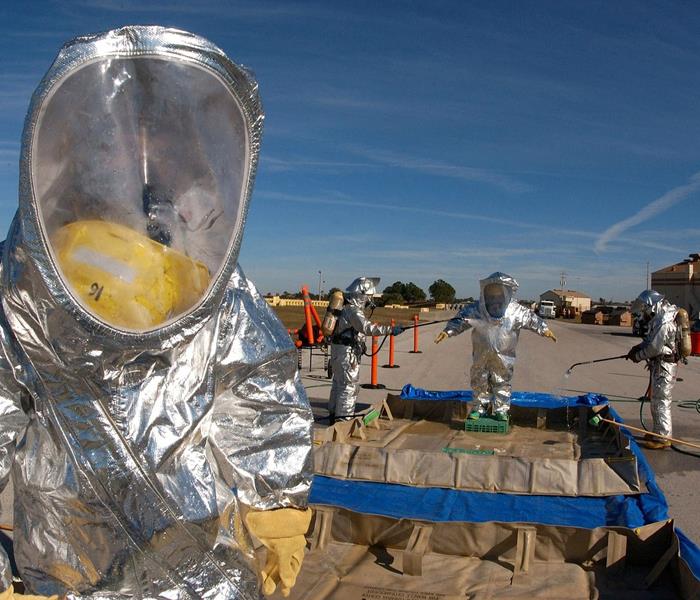Hazardous Chemical Exposure
9/6/2016 (Permalink)
 Workers suffer more than 190,000 illnesses and 50,000 deaths annually related to chemical exposures.
Workers suffer more than 190,000 illnesses and 50,000 deaths annually related to chemical exposures.
According to OSHA, workers suffer more than 190,000 illnesses and 50,000 deaths annually related to chemical exposures. Workplace chemical exposures have been linked to cancers and other lung, kidney, skin, heart, stomach, brain, nerve, and reproductive diseases. There are four major ways you can control exposure to hazardous chemicals:
1. Eliminate or substitute for the dangerous chemical.
2. Install physical controls to access to the chemical.
3. Implement administration and business practice controls.
4. Use protective equipment.
The easiest and quickest way of controlling exposure to hazardous chemicals may be to stop using the hazardous chemical or start using another safer chemical in place of the dangerous chemical. Transitioning to safer alternatives can be a complex undertaking, but a variety of existing resources make it easier. OSHA has developed a step-by-step toolkit to provide employers and workers with information, methods, tools, and guidance on using informed substitution in the workplace.
Need help assessing your chemical exposure risks? Call us at (860) 216-2785.
A second way to control hazardous chemical exposure is to implement a physical change in the workplace that reduces or eliminates the hazard. Examples are changing a process so it minimized the contact workers have with the hazardous chemicals and isolating or enclosing the process. Other companies have switched to a wet method of using a hazardous chemical to reduce the dust or particulates working with the chemical produces. Fume hoods and improved ventilation can be solutions in other situations.
Changing Practices or Controls
A third alternative is to change the work practice or administrative controls. That could mean rotating job assignments or adjusting work schedules so that your workers are not overexposed to a hazardous chemical.
Using Protective Equipment
A fourth way to control exposure to hazardous chemicals is to use chemical protective clothing like eye protection and gloves. OSHA says an estimated 5 million workers are required to wear respirators in 1.3 million workplaces throughout the United States. Respirators protect workers against insufficient oxygen environments, harmful dusts, fogs, smokes, mists, gases, vapors, and sprays.
OSHA can help answer questions or concerns from employers and workers. To reach your regional or area OSHA office, go to the OSHA Offices by State webpage or call 1-800-321-OSHA (6742). Small businesses may contact OSHA's free On-site Consultation services funded by OSHA to help determine whether there are hazards at their worksites. To contact free consultation services, go to OSHA's On-site Consultation webpage or call 1-800-321-OSHA (6742) and press number 4.
We Can Help
The team at SERVPRO of Bloomfield/Enfield has specialized training and experience in fire restoration services, natural disaster prevention, natural disaster cleanup, and controlling exposure to hazardous chemicals. Our expertise also includes electronics restoration and document drying. And we’re your business’s best resource for mold mitigation and removal. Call SERVPRO of Bloomfield/Enfield (860.216.2785) anytime, 24/7.
We've served clients in Avon, Agawam, Bloomfield, Coventry, East Hartford, East Longmeadow, Ellington, Enfield, Farmington, Hartford, Manchester, Newington, Simsbury, South Windsor, Springfield, West Hartford, and beyond.
SERVPRO of Bloomfield/Enfield
100 Peters Road, Bloomfield, CT 06002
IICRC Certified
Noemi Garcia
Franchise Owner
Call 860.216.2785
24 hour emergency service






 24/7 Emergency Service
24/7 Emergency Service